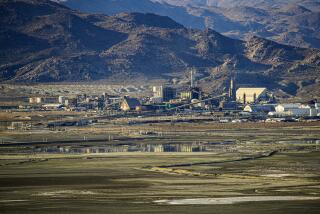One Family Leaves the âRat Raceâ Behind
PATTERSON, Calif. â They say descending onto the flat land of the San Joaquin Valley along Interstate 5 from the rolling hills of the San Francisco Bay Area can be a bit like landing on a remote, tranquil island.
During the 90-mile commute home from the stress of city life, the hayfields seem to dance and sway to a motion almost unknown in the concrete jungles.
âI find the drive home to be a sort of therapy, despite the fact it takes two hours,â said Rebecca Northrop, 31. âItâs stepping out of the rat race.â
Northropâs family makes the daily weekday trip to San Jose and back to Patterson, where they bought their first home last year. Her daughter attends junior high in San Jose and her husband works just three blocks away from the finance company where she has been a loan officer for five years.
âYou know, we spend almost all of our time together during the week in that car,â she said. âIt is our second home. One on wheels.â
Mayor Wade Binghamâs grandfather came to Patterson from Alabama in 1911, two years after the town was created by the Patterson family as a subdivision.
Perhaps appropriately, it was founded as an affordable community for those in the East and the South where land had become scarce and costly. Binghamâs father read about the âcheap parcels in the Golden Stateâ in a church bulletin and soon was on the road to California.
A drive around the townâs palm-tree-studded downtown plaza reveals the quaint land grant office that still stands. It sits in an oval plaza that is the hub of two streets laid out in concentric circles and spliced with intersecting roads like spokes.
Growth Curbs Spur Boom
The building is both a symbol of the townâs founding and its recent rebirth as a suburb for those who cannot afford the Bay Areaâs higher prices.
It is a recent boom that, ironically, was sparked after growth-control measures were adopted in nearby Tracy and Manteca.
âThe developers about two years ago suddenly discovered they could come to Patterson, buy an acre of ground for one-half to one-third what they had to pay for it even in Tracy, yet sell the house they would build on it for the same,â Bingham said.
The rapid growth, expected to increase the population by 4,000 from its current level of 6,000 by 1989, has prompted some concerns that small-town quality of life is being lost.
More to Read
Sign up for Essential California
The most important California stories and recommendations in your inbox every morning.
You may occasionally receive promotional content from the Los Angeles Times.










